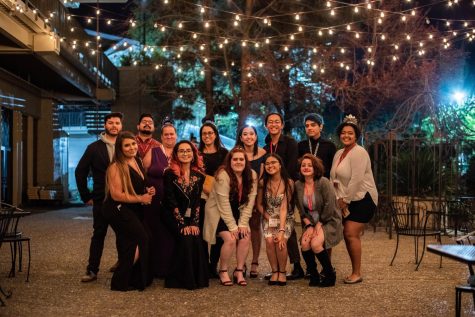The View From Here: The prevalence of student homelessness
Homeless college students is a topic we’ve addressed before, but with recent studies, I would like to further stress the importance of helping these students in our community.
When people think of the word homeless, it is sometimes imagined as drug addicts or ‘dirty’ people on the street. But the harsh reality is, especially within this area, many people who are homeless are just like you.
It’s not uncommon to see people in decent clothes, or even a suit, asking for food or handing out their résumé on the street.
According to a news article by NPR, a study was done by Wisconsin HOPE Lab and Temple University this year that states of the college students surveyed, 36 percent said they were food insecure, 36 percent said they were housing insecure, and 9 percent reported being homeless.
But the numbers are even greater when limited to solely community college students. In this case, 42 percent struggled to get adequate food, 9 percent said they had not eaten for at least one day during the last month because of money, and 46 percent had trouble affording housing and utilities.
Being at a community college campus, there is an even greater possibility a student in your class is homeless.
According to academic article called “The Dark Side of College (Un)Affordability: Food and Housing Insecurity in Higher Education”, the same study stated “nearly 90 percent [of students] indicated that they were upset or worried about not having enough money to pay for the things they needed in order to attend college; 78 percent stated that they were having difficulty paying their bills”.
The same article also explains, food and housing insecurity is greater among college students than the general population and even Ivy League students with full financial aid are struggling with hunger.
Personally, I found these statistics to be shocking. Many may be aware of the possibility of homeless students, but few are aware of the prevalence of the issue.
In our paper’s past article about homelessness, it was revealed the student we had interviewed was not comfortable utilizing the resources available to her because of stigma. This can be a common thing.
In an article by CBS News, a homeless student named Alejandro Reyes was interviewed and stated, “The problem with homelessness in universities is that because we don’t want to stand out, that the university has no idea that we even exist.”
Thankfully, Skyline does address the presence of homeless students. However, they could help lessen the stigma by making this issue more widely known and both offer and advertise more resources for these students.
Taking care of these students can greatly benefit them, as homelessness does have an impact on their success in college.
“The Dark Side of College (Un)Affordability: Food and Housing Insecurity in Higher Education” also speaks of a study that reported college students who don’t have enough to eat are 22% less likely 3.5–4.0 GPA rather than a 2.0–2.49 GPA.
The article also explains being homeless negatively affects both the students chance of degree completion and the school where they are enrolled.
Therefore, it is greatly in the interest of Skyline to provide help for these students, and for other students to be aware and break down the stigma.









